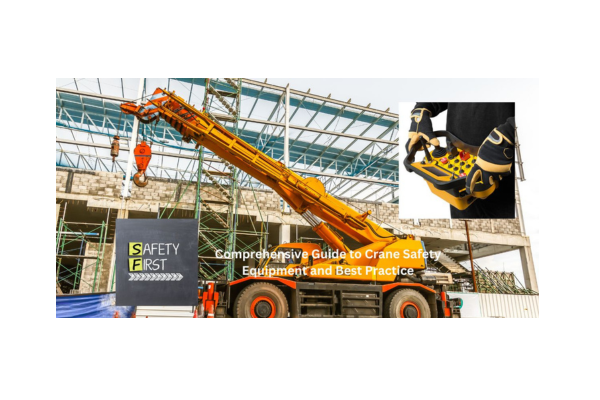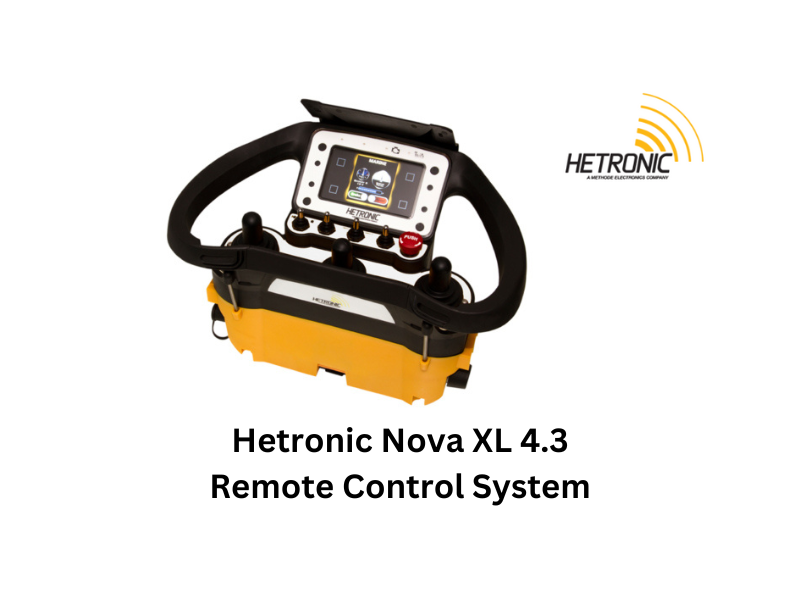Introduction – Guide to Crane Safety Equipment and Best Practices
In the dynamic world of construction and heavy industry, cranes play a pivotal role in lifting and moving large, heavy loads. However, with great power comes great responsibility, and ensuring crane safety is paramount to preventing accidents, protecting workers, and maintaining operational efficiency. This comprehensive guide delves into the essential aspects of crane safety equipment and best practices, providing you with the knowledge to create a safer work environment.
1. Understanding Crane Types and Their Specific Safety Needs
Before diving into safety equipment and practices, it’s crucial to understand the different types of cranes and their unique safety considerations:
1.1 Mobile Cranes
– Truck-mounted cranes
– Rough terrain cranes
– All-terrain cranes
1.2 Tower Cranes
– Hammerhead cranes
– Luffing jib cranes
1.3 Overhead Cranes
– Bridge cranes
– Gantry cranes
1.4 Specialized Cranes
– Crawler cranes
– Floating cranes
– Aerial cranes (helicopters)
Each type of crane has specific safety requirements, which we’ll address throughout this guide.
2. Essential Crane Safety Equipment
Proper safety equipment is the first line of defense against crane-related accidents. Here’s a comprehensive list of must-have safety gear:
2.1 Personal Protective Equipment (PPE)
– Hard hats
– Safety glasses
– Steel-toed boots
– High-visibility vests
– Gloves
2.2 Fall Protection Systems
– Safety harnesses
– Lanyards
– Anchorage points
2.3 Load Handling Equipment
– Slings (wire rope, chain, synthetic)
– Shackles
– Hooks with safety latches
– Spreader bars
2.4 Communication Devices
– Two-way radios
– Hand signals charts
2.5 Warning Systems
– Horns
– Lights
– Alarms
2.6 Load Moment Indicators (LMI)
– Digital display systems
– Audible and visual warnings
2.7 Anti-Two-Block Devices
– Prevents the hook block from contacting the boom tip
2.8 Outrigger Pads
– Distributes the crane’s weight over a larger area
For more information on crane safety equipment requirements, visit the s/regulations/standardnumber/1926/1926.1401″ rel=”dofollow”>Occupational Safety and Health Administration (OSHA) .
3. Crane Inspection and Maintenance
Regular inspection and maintenance are crucial for ensuring the safe operation of cranes. Implement the following practices:
3.1 Daily Inspections
– Visual checks of all critical components
– Functional tests of controls and safety devices
3.2 Monthly Inspections
– More thorough examination of structural elements
– Lubrication of moving parts
3.3 Annual Inspections
– Comprehensive evaluation by a qualified person
– Load testing and certification
3.4 Maintenance Records
– Keep detailed logs of all inspections and repairs
– Use digital maintenance management systems for better tracking
The Crane Manufacturers Association of America (CMAA) provides guidelines for crane inspection and maintenance.
4. Operator Training and Certification
Well-trained operators are essential for safe crane operations. Ensure your operators meet the following criteria:
4.1 NCCCO Certification
– Obtain certification from the National Commission for the Certification of Crane Operators
4.2 Specific Crane Type Training
– Ensure operators are trained on the specific types of cranes they’ll be using
4.3 Ongoing Education
– Provide regular refresher courses and updates on new safety regulations
4.4 Practical Experience
– Implement mentorship programs for new operators
5. Site Planning and Setup
Proper site planning is crucial for safe crane operations:
5.1 Site Survey
– Assess ground conditions
– Identify overhead obstacles and power lines
5.2 Crane Placement
– Ensure stable ground for outriggers
– Consider wind conditions and load paths
5.3 Traffic Management
– Establish clear zones for pedestrians and vehicles
– Use signage and barriers to mark danger areas
5.4 Emergency Response Planning
– Develop and communicate emergency procedures
– Conduct regular drills
6. Load Handling Best Practices
Safe load handling is at the core of crane safety:
6.1 Load Assessment
– Accurately determine the weight and center of gravity of loads
– Use load charts to ensure the crane’s capacity is not exceeded
6.2 Rigging Techniques
– Choose appropriate slings and attachments
– Implement proper hitching methods
6.3 Lift Planning
– Develop detailed lift plans for complex or heavy lifts
– Use 3D modeling software for visualization
6.4 Communication During Lifts
– Use clear hand signals or radio communication
– Designate a single signal person for each lift
7. Weather Considerations
Weather conditions can significantly impact crane safety:
7.1 Wind Speeds
– Establish maximum wind speed limits for different crane types
– Use anemometers to monitor wind speeds
7.2 Lightning Protection
– Implement lightning detection systems
– Establish clear shutdown procedures during electrical storms
7.3 Cold Weather Operations
– Follow manufacturers’ guidelines for low-temperature operations
– Ensure proper lubrication and hydraulic fluid viscosity
7.4 Hot Weather Precautions
– Monitor operator fatigue and provide adequate breaks
– Protect against heat-related illnesses
8. Technology and Innovations in Crane Safety
Stay up-to-date with the latest safety technologies:
8.1 Anti-Collision Systems
– Implement crane-to-crane and crane-to-obstacle detection systems
8.2 Remote Operation
– Explore options for remote-controlled cranes to remove operators from danger zones
8.3 Virtual Reality Training
– Use VR simulations for operator training and scenario practice
8.4 IoT and Telematics
– Implement real-time monitoring of crane performance and safety parameters
For insights into emerging technologies in the crane industry, visit the Association for Advancing Automation (A3).
9. Regulatory Compliance and Industry Standards
Stay compliant with relevant regulations and standards:
9.1 OSHA Regulations
– Familiarize yourself with OSHA’s Cranes and Derricks in Construction standard (29 CFR 1926 Subpart CC)
9.2 ASME Standards
– Follow the American Society of Mechanical Engineers (ASME) B30 series for crane safety
9.3 ISO Standards
– Consider international standards like ISO 12480 for crane operations
9.4 Local Regulations
– Be aware of state and local regulations that may exceed federal requirements
Conclusion – Guide to Crane Safety Equipment and Best Practices
Crane safety is a multifaceted endeavor that requires constant vigilance, proper equipment, thorough training, and adherence to best practices. By implementing the strategies outlined in this guide, you can significantly reduce the risk of crane-related accidents and create a safer, more efficient work environment.
Remember that safety is an ongoing process. Stay informed about new regulations, technologies, and best practices in the industry. Regularly review and update your safety protocols, and foster a culture of safety among all employees involved in crane operations.
By prioritizing crane safety, you not only protect your workers and equipment but also enhance your company’s reputation and operational efficiency. Safe crane operations are the foundation of successful projects and a thriving industry.





